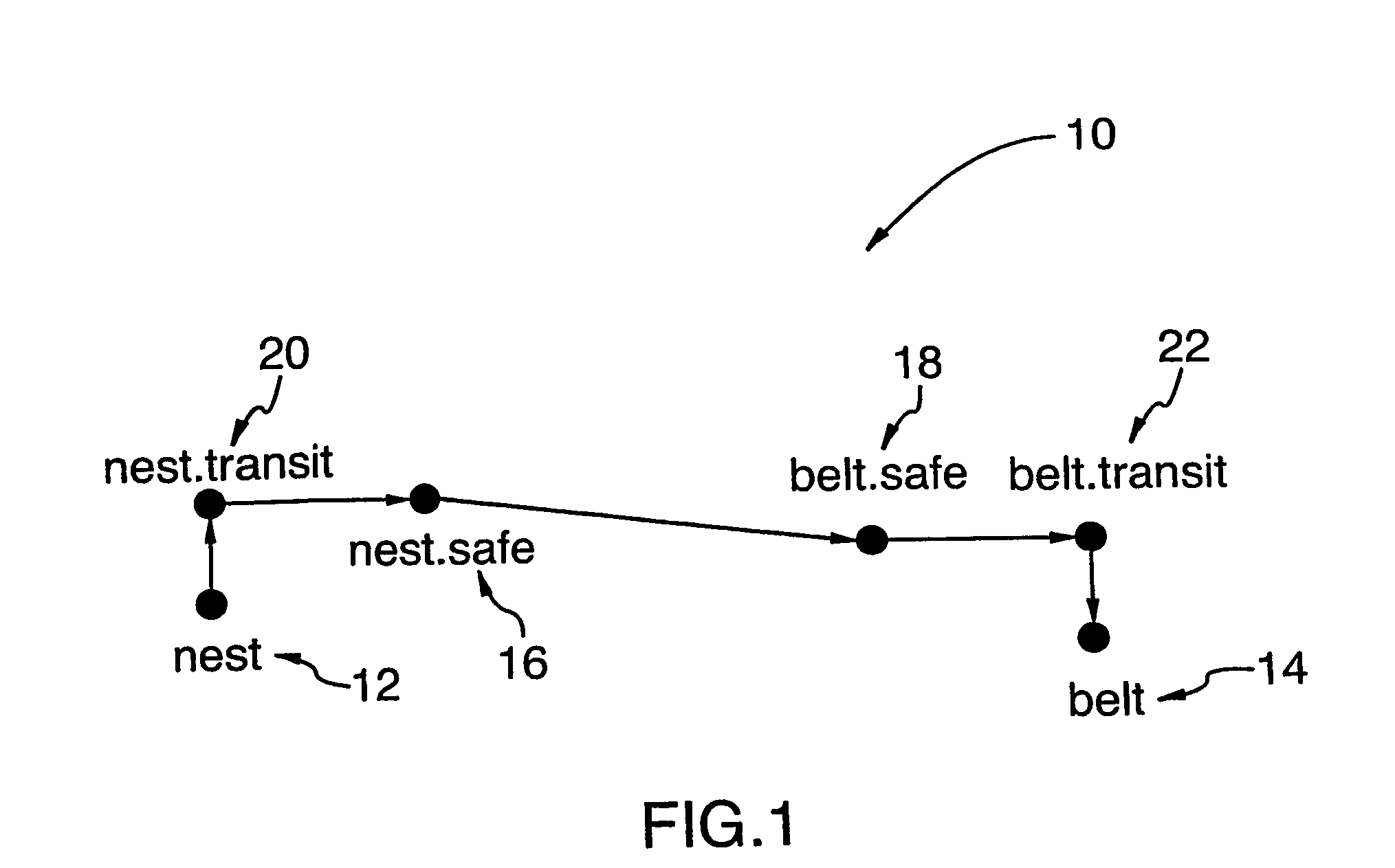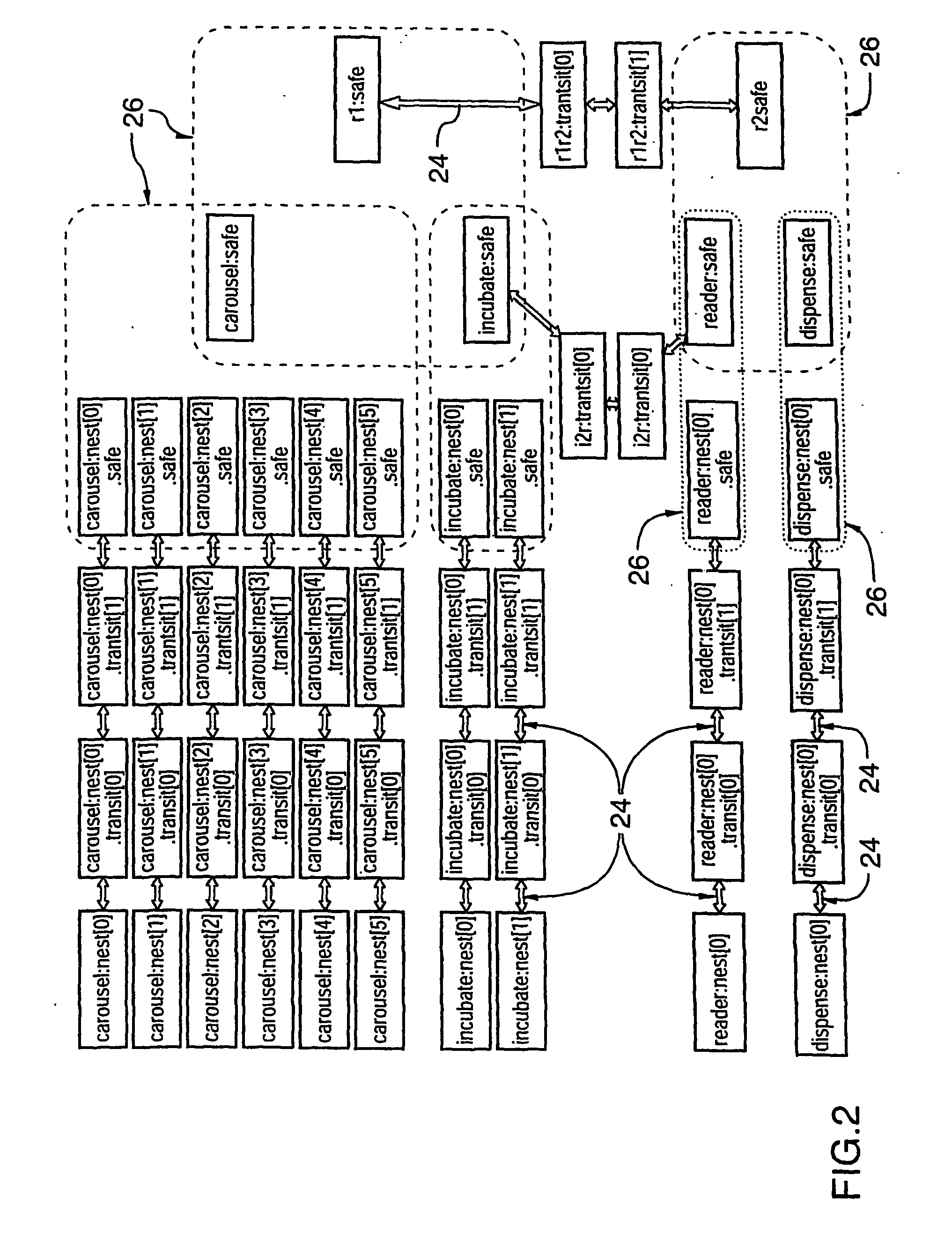Syntactic inferential motion planning method for robotic systems
a robotic system and inferential motion technology, applied in the direction of manipulators, electric digital data processing, instruments, etc., can solve the problems of inflexible behaviour or inability to adapt to any change in the particular system they are designed for, and the movement is seldom so straightforward
- Summary
- Abstract
- Description
- Claims
- Application Information
AI Technical Summary
Benefits of technology
Problems solved by technology
Method used
Image
Examples
Embodiment Construction
Definitions
[0053] The following terms are used in the present description and will be assumed to have the following meanings:
[0054]“Robot end effector”, “robot”, “robotic device”, “mover”: are used to refer to the moving end of a robotic device that perform the desired function. This can include, for example, the grasping end of a robotic arm. The assignee of the present invention, Thermo CRS Ltd., manufactures several types of such movers and examples are provided at www.thermo.com (the contents of which are incorporated herein by reference).
[0055]“Terminal points”: refers to the points, or locations, where the robot end effector a actually interacts with objects. For example, in cases, as described further below, where a robotic arm is used to move an object from a conveyor belt to a nest in a carousel used to house the objects, the terminal points would consist of “belt” and “nest”.
[0056]“Safe points”: refers to pseudo-destinations where the robot end effector can be safely ...
PUM
 Login to View More
Login to View More Abstract
Description
Claims
Application Information
 Login to View More
Login to View More - R&D
- Intellectual Property
- Life Sciences
- Materials
- Tech Scout
- Unparalleled Data Quality
- Higher Quality Content
- 60% Fewer Hallucinations
Browse by: Latest US Patents, China's latest patents, Technical Efficacy Thesaurus, Application Domain, Technology Topic, Popular Technical Reports.
© 2025 PatSnap. All rights reserved.Legal|Privacy policy|Modern Slavery Act Transparency Statement|Sitemap|About US| Contact US: help@patsnap.com



